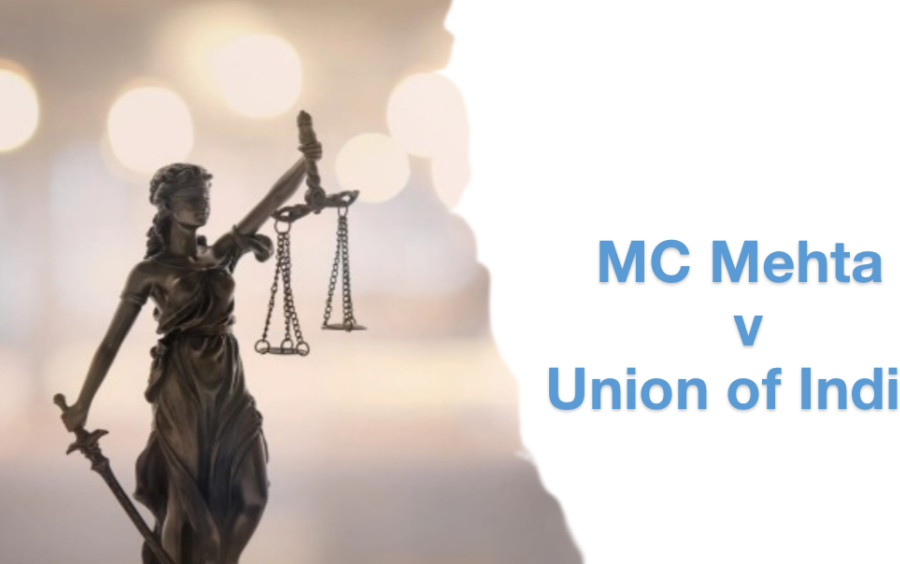Introduction
Originating in the Himalayas and flowing south and then east into the Bay of Bengal, the Ganga River, with a length of 2,525 km, has been a vital resource for many Indian civilizations. Kanpur, a city with a population of 2.9 million people situated on the Ganga’s banks, has been a major source of pollution, primarily due to the discharge of industrial effluents from the leather industry. The wastewater from these tanneries contains harmful organic and inorganic materials that, when released into the river, deplete oxygen levels and harm aquatic life, posing health risks to those who consume the water. This issue was brought to the Supreme Court’s attention through a writ petition filed by renowned environmental lawyer Shri MC Mehta, often referred to as the Ganga Pollution Case, Kanpur Leather Tanneries Case, or Mehta Case.
Case Facts:
- M.C. Mehta filed a Public Interest Litigation (PIL) in the Supreme Court against approximately 89 respondents, including the Union of India, the Central Board for Prevention and Control of Pollution, the Uttar Pradesh Pollution Control Board, and the Indian Standards Institute, among others, who were not held liable.
- The case began in 1985 when a matchstick caused the Ganga River in Haridwar to catch fire for over 30 hours, highlighting the presence of flammable compounds on the water. The Court recognized the significance of the issue but acknowledged the challenge due to the river’s vast stretch.
Key Issues:
- Whether leather tanneries had established primary treatment plants.
- Whether the State Government addressed the worsening river conditions.
- Whether any steps had been taken by the state.
- Whether smaller industries should receive funding for effluent treatment and the criteria for defining “smaller” industries.
- What steps the Central Government should take to regulate pollutant discharge into the river.
Petitioner’s Arguments:
The petitioner contended that both authorities and individuals affected by the river’s pollution were neglecting the issue. They sought a court order to prevent the release of toxic effluents into the Ganga unless treatment plants were integrated to curb water pollution.
Judgment:
In 1988, the Apex Court ruled in favor of the petitioner. It held that industries were responsible for treating their waste before discharging it. Only industries demonstrating adequate waste treatment methods should receive licenses. Existing industries found responsible for water pollution should face strict action. The court also ordered tanneries to establish primary treatment plants and held the municipal authorities responsible for their failure to address water pollution.
The Apex Court directed the central government to provide free educational materials to increase public environmental awareness. The judgment applied to all municipal authorities within the jurisdiction of river Ganga.
Conclusion:
This landmark judgment in Indian environmental law addressed new issues and interpretations of laws and fundamental rights. Its principles continue to influence environmental cases and regulations, making it a significant ruling in the history of Indian judiciary.
Bhavesh Jangra – Legal Associate


Their free health check-ups are a wonderful initiative.
cost cheap lisinopril pill
Efficient, effective, and always eager to assist.
Their health awareness programs are game-changers.
can i get cheap clomid without rx
Pioneers in the realm of global pharmacy.
Get warning information here.
how can i get lisinopril pill
They make international medication sourcing effortless.
Bridging continents with their top-notch service.
how can i get generic clomid no prescription
The staff exudes professionalism and care.
They have a fantastic range of supplements.
gabapentin 300 mg for dogs side effects
Their vaccination services are quick and easy.